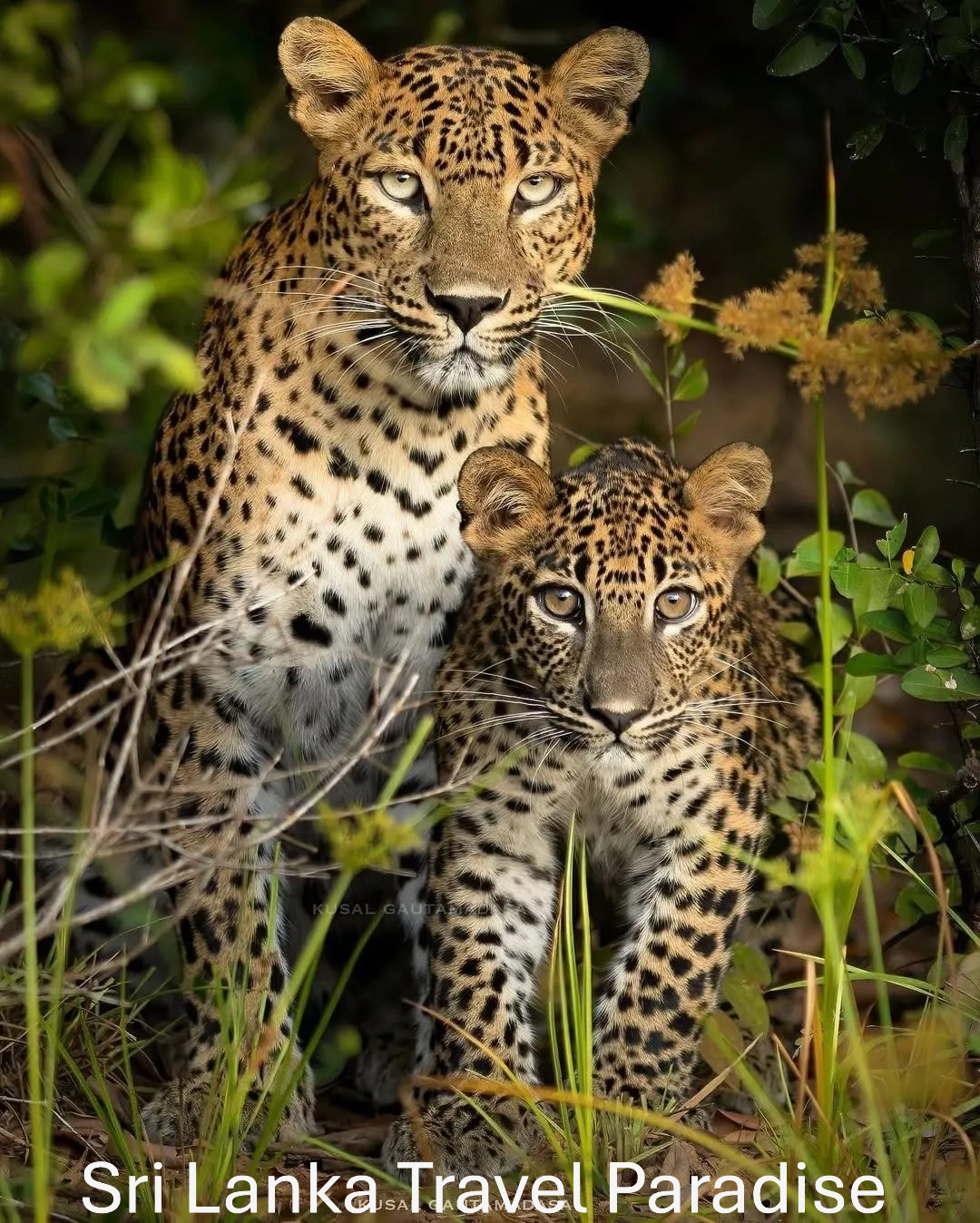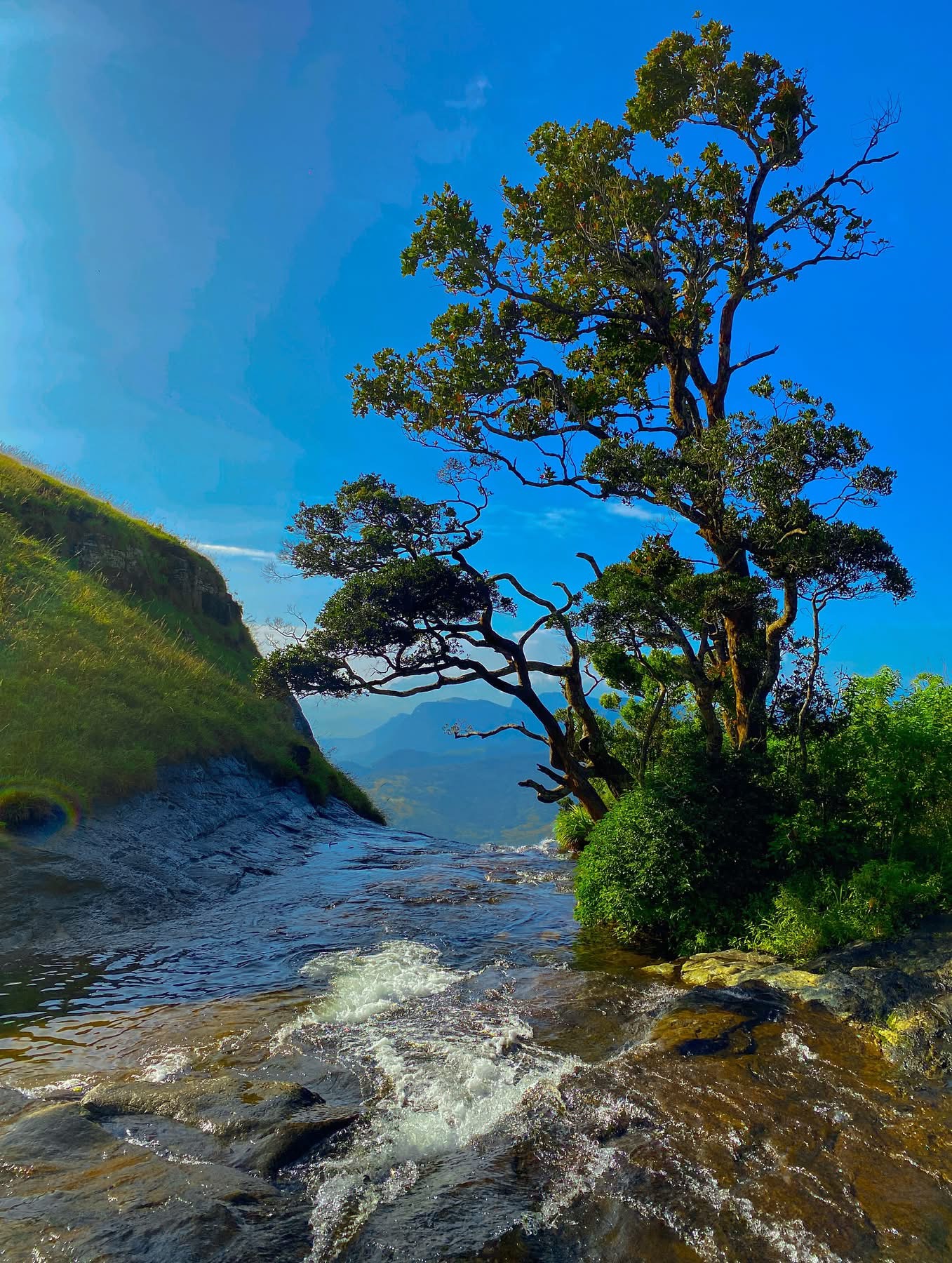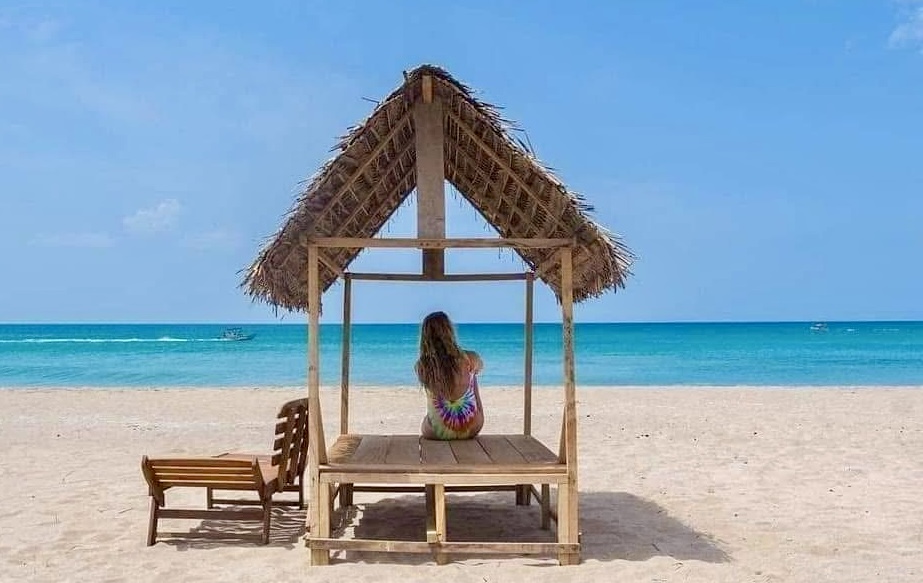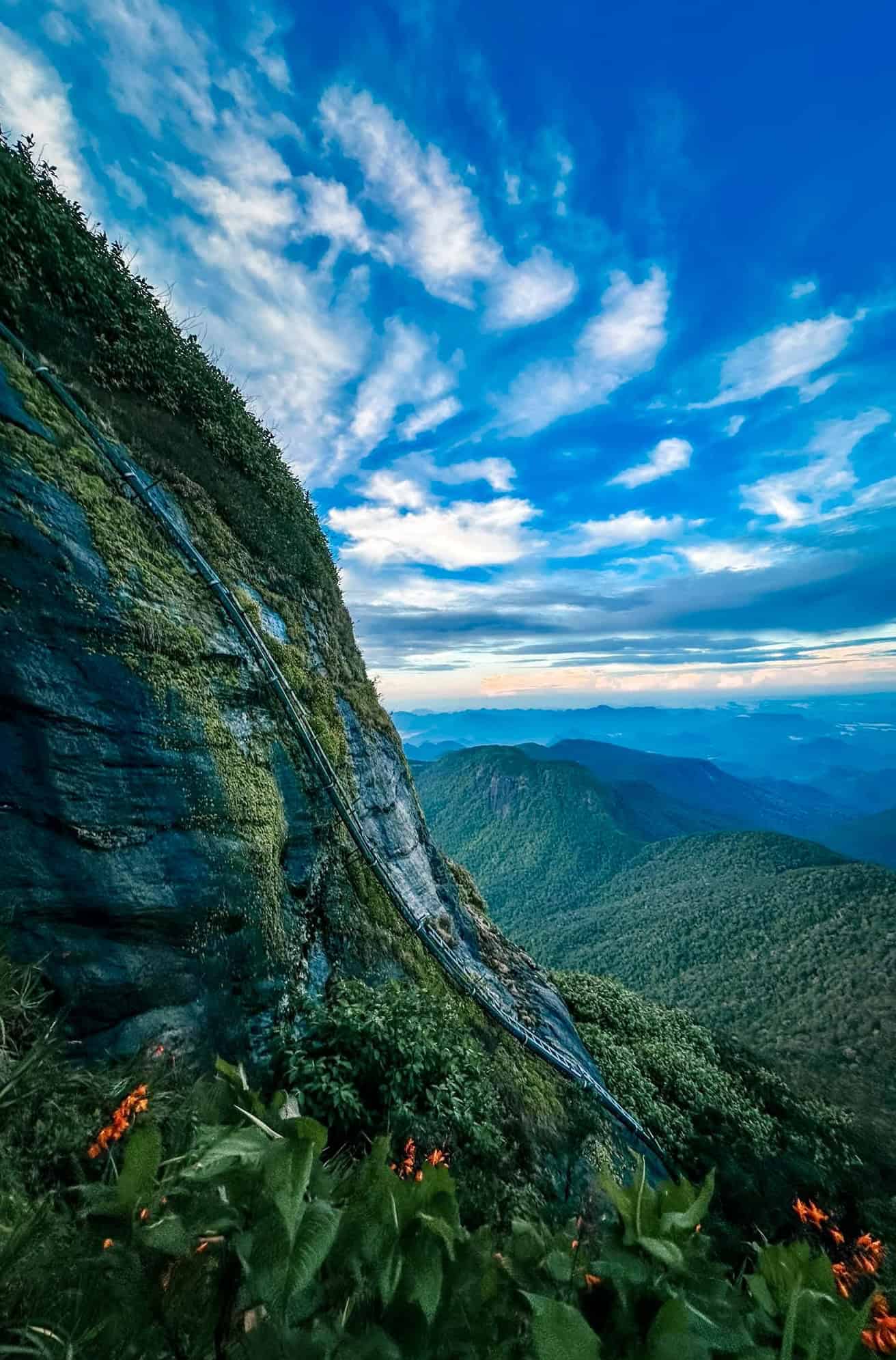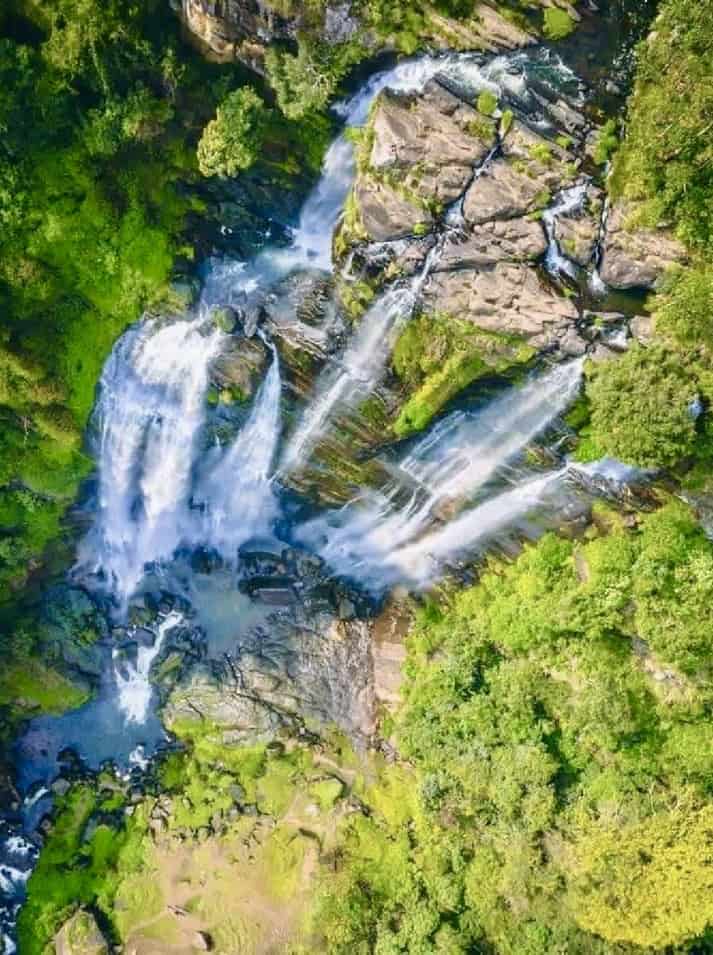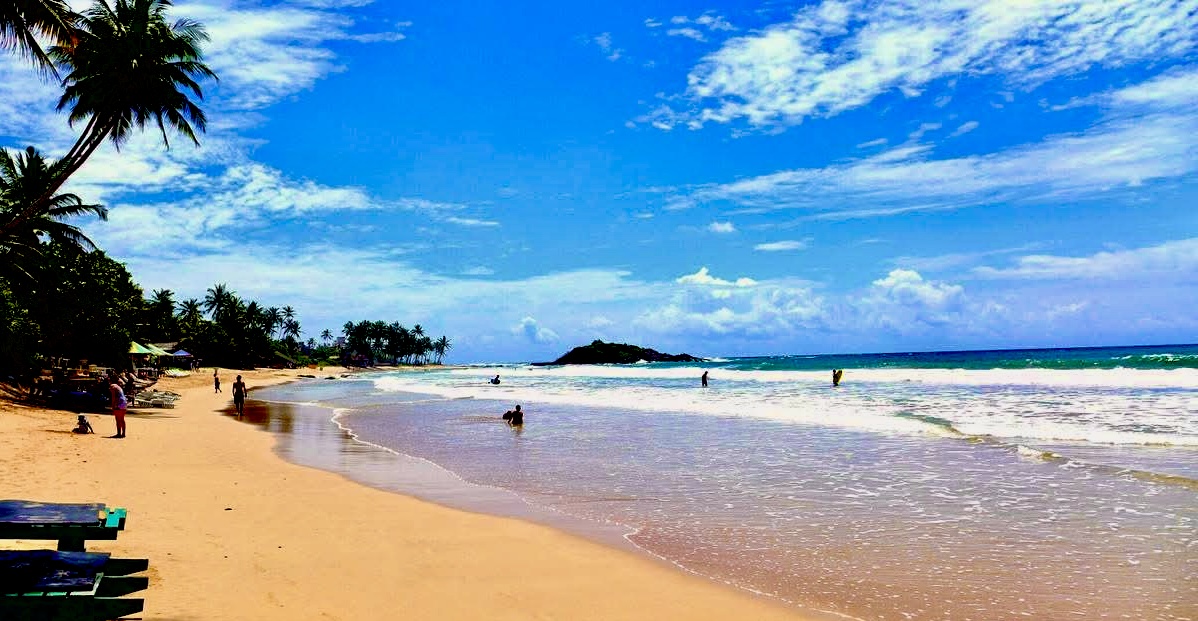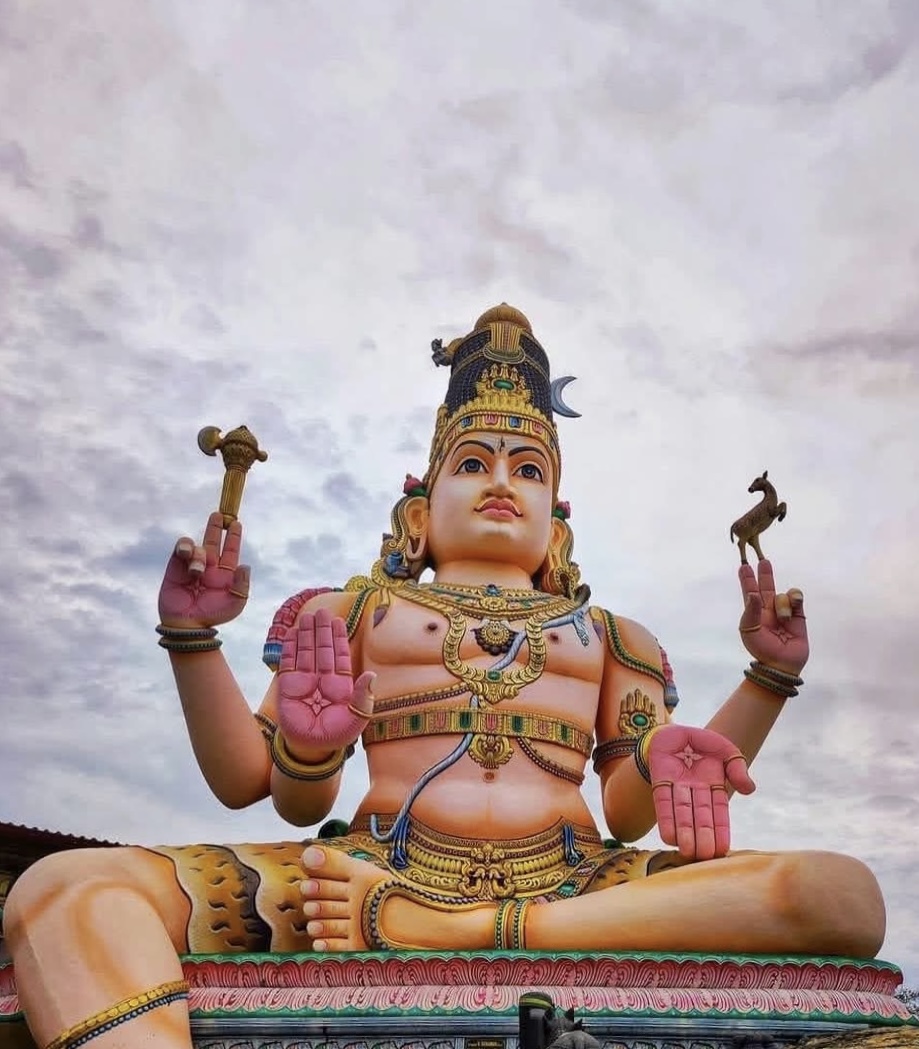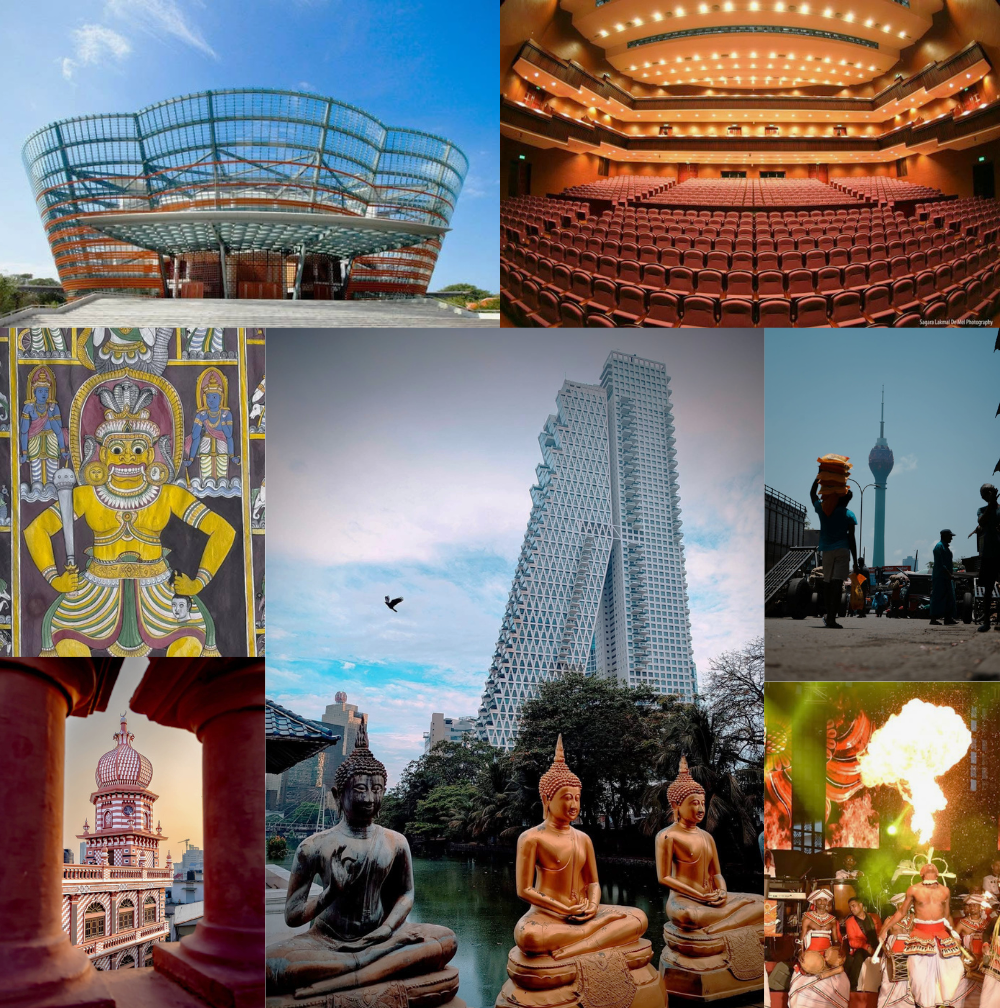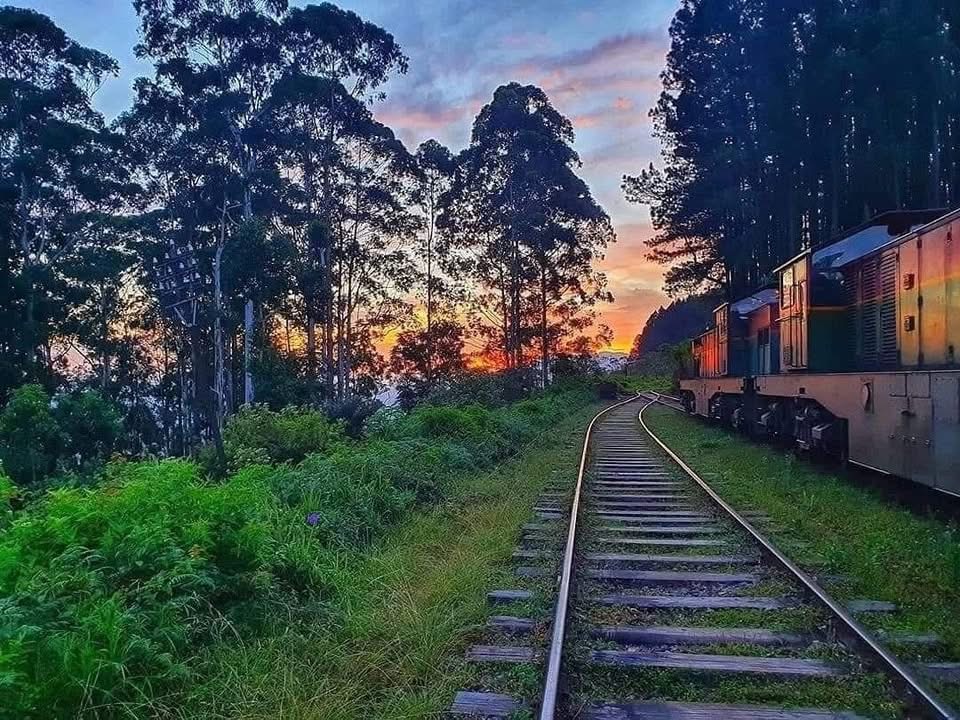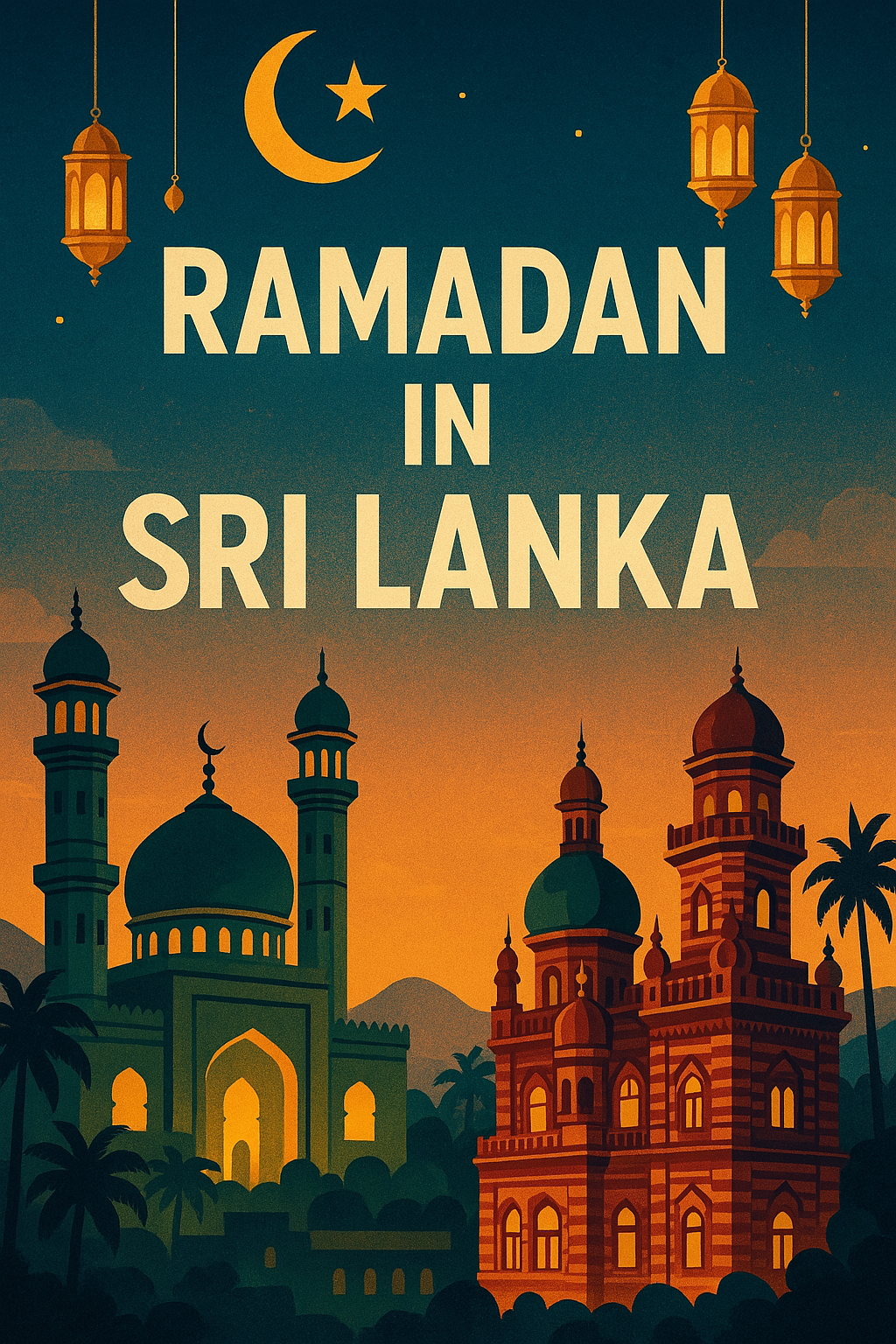Introduction
Colombo, the bustling capital of Sri Lanka, is a city where history and modernity blend seamlessly. Colombo features ancient temples and colonial architecture. It also boasts luxury shopping malls and a vibrant nightlife. Colombo offers an unforgettable experience for travelers from around the world. You might explore its cultural heritage. You could indulge in local delicacies. You may soak in scenic ocean views. In this city, you will find something to enjoy.
In this guide, we’ll uncover:
✔ Must-visit landmarks in Colombo
✔ The best things to do and experience
✔ Travel tips for an enriching stay
✔ The best time to visit Colombo
Top Attractions in Colombo
🏛 Gangaramaya Temple – A Blend of Ancient & Contemporary Architecture
The Gangaramaya Temple in Colombo, Sri Lanka, is a stunning fusion of ancient traditions and contemporary design. This revered temple is not just a place of worship. It is also a cultural landmark. It reflects the harmonious coexistence of Sri Lanka’s rich Buddhist heritage and modernity. Whether you’re a devout Buddhist or simply an admirer of architectural beauty, this temple offers an unforgettable experience. The Gangaramaya Temple is a perfect spot for travelers. It offers a mix of spirituality, history, and art in a bustling urban setting.
Historical Background and Significance
The Gangaramaya Temple was established in the late 19th century. This occurred during the colonial era. It has since become one of Colombo’s most iconic religious sites. Sri Jinaratana Thera, a prominent monk, founded it. He sought to preserve and propagate the teachings of Buddhism. He aimed to blend traditional and modern elements. The temple is a place for spiritual activities. It also plays an essential role in Sri Lanka’s cultural and educational spheres.
Present-Day Relevance and Challenges
Today, the Gangaramaya Temple is one of the most popular tourist attractions in Colombo. It attracts both locals and international visitors. They come to admire its intricate architecture. They also appreciate the large Buddha statues and diverse collection of Buddhist artifacts. The temple has faced challenges with modernization, balancing its role as a place of worship with the demands of tourism. Efforts to preserve its unique architecture while catering to the growing number of visitors are ongoing.
Travel Guide: How to Visit Gangaramaya Temple
- Location: The Gangaramaya Temple is located in the heart of Colombo. It is close to the Beira Lake, a tranquil setting in the city’s bustling center.
-
- Admission: While entry to the temple is free, donations are encouraged to help with maintenance and educational activities.
- Dress Code: As this is a religious site, visitors should dress modestly. It is customary to remove shoes before entering the temple.
Nearby Attractions and Additional Recommendations
Viharamahadevi Park: A beautiful green space in the heart of Colombo, perfect for a relaxing stroll or a picnic.
Beira Lake: After visiting the temple, take a peaceful walk around the nearby Beira Lake. It offers a serene escape from the urban landscape.
(Photo credits to the rightful owners)
🌊 Galle Face Green – The Perfect Seaside Escape
Galle Face Green in Colombo, Sri Lanka, is the ultimate seaside escape. It offers breathtaking ocean views and a lively atmosphere. You will find a perfect blend of relaxation and recreation. You can enjoy a peaceful sunset here. You can also savor local street food or take a leisurely stroll along the coast. This historic urban park is a must-visit destination. Galle Face Green boasts a unique combination of colonial heritage and modern city life. It is a favorite spot for both locals and tourists.
Historical Background and Significance
The British originally laid out Galle Face Green in the 19th century as a promenade and horse-racing track. It has a long and storied history. Over the years, it has evolved into Colombo’s most iconic recreational space. This vast stretch of land hugs the Indian Ocean. It has witnessed colonial transformations and independence celebrations. Now, it serves as a beloved gathering place for Sri Lankans from all walks of life.
Present-Day Relevance and Challenges
Today, Galle Face Green is a bustling hub of activity, drawing families, couples, fitness enthusiasts, and food lovers. It’s famous for its spectacular sunsets, making it an ideal evening destination. Street vendors sell delicious Sri Lankan treats. These include isso wade (spicy prawn fritters) and fresh king coconut. These treats add to the charm of this vibrant location. However, with its growing popularity, challenges have arisen. Issues like crowd management, littering, and commercialization have raised concerns about preserving its natural beauty. Conservation efforts and responsible tourism are crucial in maintaining its appeal.
Travel Guide: How to Enjoy Galle Face Green
- Location: Situated in central Colombo, along the Galle Road, facing the vast Indian Ocean.
- Best Time to Visit: Evenings are the best time. The cool sea breeze and stunning sunsets create a magical atmosphere.
- Activities:
- Take a leisurely stroll along the promenade.
- Try Sri Lankan street food, especially the famous isso wade.
- Fly a kite— a popular local pastime.
- Capture Instagram-worthy sunset photos.
- Nearby Dining: The Galle Face Hotel, one of Asia’s oldest hotels, offers a luxurious dining experience with ocean views.
Nearby Attractions and Additional Recommendations
Dutch Hospital Shopping Precinct: Enjoy boutique shopping, cafes, and restaurants in this restored Dutch-era hospital.
Old Parliament Building: A short walk away, this grand colonial structure is worth a visit.
Colombo Fort: Explore the historic district with its mix of colonial-era buildings and modern attractions.
🏰 Colombo National Museum – A Treasure Trove of History
The Colombo National Museum, Sri Lanka’s largest and most significant museum, is a must-visit for history and culture enthusiasts. This museum houses a vast collection of artifacts, ancient manuscripts, royal regalia, and artworks. It provides a fascinating journey through the island’s rich past. Established during the British colonial era, the museum is an architectural masterpiece, blending neo-classical design with Sri Lankan heritage. Whether you’re an explorer of history or simply curious about the island’s deep-rooted traditions, this treasure trove of history offers a captivating experience.
Historical Background and Significance
The Colombo National Museum was founded in 1877 by the British Governor Sir William Henry Gregory. It was established to preserve and showcase Sri Lanka’s archaeological, artistic, and literary heritage. Over the years, the museum has expanded its collection. It offers a comprehensive narrative of the island’s history. This narrative spans from ancient kingdoms to colonial rule and independence. The museum’s architecture itself is a relic of history, featuring elegant white pillars and colonial-era aesthetics.
One of its most prized exhibits is the throne and crown of the last King of Kandy. This is a symbol of Sri Lanka’s final monarchy. It marks the period before British colonization. Other highlights include rare Ola leaf manuscripts. There are also ancient sculptures and intricate temple paintings. These provide insights into Sri Lanka’s artistic and spiritual traditions.
Present-Day Relevance and Challenges
Today, the Colombo National Museum continues to be a center of learning, research, and tourism. It serves as a crucial institution for preserving Sri Lanka’s history. It also plays a vital role in educating future generations about the island’s diverse cultural influences. However, like many historical institutions, it faces challenges. These challenges include the preservation of delicate artifacts. Modernization of exhibits and increased visitor footfall are also challenges. Conservation efforts are underway to ensure these priceless relics remain intact for years to come.
Travel Guide: How to Visit the Colombo National Museum
- Location: Situated in Cinnamon Gardens, Colombo, near Viharamahadevi Park.
- Opening Hours: Open daily from 9:00 AM to 5:00 PM, except on public holidays.
- Entry Fee: A nominal entrance fee is charged for both local and international visitors.
- What to See:
- The Royal Regalia of Sri Lanka’s last kings.
- Ancient Buddhist and Hindu sculptures.
- Traditional Sri Lankan masks and costumes.
- Colonial-era artifacts showcasing Sri Lanka’s British, Dutch, and Portuguese influences.
- Photography: Allowed in most areas, but some exhibits may have restrictions.
Nearby Attractions and Additional Recommendations
Independence Square: A historic monument celebrating Sri Lanka’s independence from British rule.
(Photo credits to the rightful owners)
🕌 Jami Ul-Alfar Mosque – The Red Mosque of Colombo
The Jami Ul-Alfar Mosque, commonly known as the Red Mosque, is one of Colombo’s most striking landmarks. This architectural marvel is located in the bustling Pettah district. It stands out with its vibrant red-and-white striped façade. Its architecture blends Indo-Saracenic, Gothic, and Islamic design elements. Built over a century ago, the mosque serves not only as a place of worship. It is also a cultural icon. Visitors from around the world are drawn to it. Whether you’re an architecture enthusiast, a history lover, or a traveler, you will find this must-visit mosque unforgettable. It offers an unforgettable experience.
Historical Background and Significance
The Jami Ul-Alfar Mosque was constructed in 1908. Colombo’s Muslim community built it to serve the growing number of traders and merchants in the area. The mosque was designed by Tamil Muslim architects. Its unique red-and-white brickwork and intricate detailing make it one of the most recognizable religious structures in Sri Lanka. It has historically served as a beacon for sailors. Sailors used its towering minarets to navigate their way into Colombo’s harbor.
Over the decades, the mosque has expanded. It now accommodates thousands of worshippers. This expansion makes it one of the largest mosques in the city. Despite its rapid modernization, the Red Mosque has retained its original charm. It has maintained its architectural grandeur. It symbolizes the deep-rooted presence of Islam in Sri Lanka.
Present-Day Relevance and Challenges
Today, Jami Ul-Alfar Mosque remains an active place of worship and a significant cultural attraction. It welcomes tourists. However, it is primarily a religious site. Visitors must respect Islamic traditions and prayer times.
Colombo’s Pettah district is becoming increasingly commercialized. Preserving the mosque’s serene atmosphere amidst the surrounding hustle and bustle is a challenge. Additionally, the growing number of visitors has led to access restrictions during prayer times. These measures ensure that worshippers can pray without disruption.
Travel Guide: How to Visit Jami Ul-Alfar Mosque
- Location: Pettah, Colombo 11, at the heart of the city’s trading district.
- Best Time to Visit: Mornings or late afternoons, avoiding prayer times (especially Friday prayers).
- Dress Code:
- Modest clothing is required (shoulders and knees covered).
- Women may need to wear a headscarf, which is sometimes provided at the entrance.
- Photography: Allowed outside the mosque but may be restricted inside during prayer hours.
- Nearby Markets: After your visit, explore Pettah’s vibrant markets, where you can shop for spices, textiles, and souvenirs.
Nearby Attractions and Additional Recommendations
Wolvendaal Church: One of Colombo’s oldest Dutch colonial churches, located nearby.
(Photo credits to the rightful owners)
🏙 Pettah Market – A Shopper’s Paradise
Pettah Market is nestled in the heart of Colombo. It is a bustling and vibrant shopping hub. The market offers an authentic Sri Lankan market experience. Pettah is known for its narrow streets lined with vendors. The streets are filled with colorful stalls and endless bargains. It is the go-to destination for everything from fresh produce and spices to electronics, textiles, and jewelry. Whether you’re a bargain hunter or a culture enthusiast, Pettah Market is a must-visit in Colombo. You might also simply want to soak in the local atmosphere.
Historical Background and Significance
Pettah has been Colombo’s main trading district since colonial times. It was originally established by the Dutch. Later, it was expanded under British rule. Over the centuries, it has grown into a commercial powerhouse, attracting merchants from across Sri Lanka and beyond. Today, it remains one of the most vibrant and chaotic marketplaces in the country. Different cultures and communities come together here through trade.
The name “Pettah” is derived from the Tamil word “Pēṭṭai,” meaning “outside the fort”. The market developed outside the old Colombo Fort area. Despite modernization, Pettah has retained its old-world charm. Its maze-like streets and heritage buildings contribute to this charm. An unmissable energy defines Colombo’s commercial heart.
Present-Day Relevance and Challenges
Pettah Market is still one of the most important trading hubs in Sri Lanka. Thousands of vendors sell goods at wholesale and retail prices. It is famous for:
- Spices and fresh produce – A paradise for food lovers and home cooks.
- Textiles and fabrics – From saris to batik prints, it’s the best place to find authentic Sri Lankan fabrics.
- Electronics and gadgets – Bargain deals on mobile phones, accessories, and more.
- Jewelry and watches – A mix of traditional and modern designs at competitive prices.
However, Pettah Market’s rapid expansion has led to overcrowding, traffic congestion, and waste management issues. While efforts are being made to improve infrastructure, navigating through the market requires patience and a sense of adventure.
Travel Guide: How to Explore Pettah Market
- Location: Pettah, Colombo 11, near the Colombo Fort railway station.
- Best Time to Visit: Early mornings (before 10 AM) to avoid the heat and crowds.
- What to Expect:
- Haggling is key – Bargaining is a common practice, so don’t hesitate to negotiate prices.
- Cash is preferred – Some vendors accept cards, but carrying cash (small denominations) is recommended.
- Crowded streets – Be prepared for narrow alleys and a fast-paced environment.
- Pro Tips:
- Wear comfortable shoes, as you’ll be walking a lot.
- Keep an eye on your belongings, as markets can get crowded.
- Try local street food, like samosas, fresh fruit juices, and sweet treats.
(Photo credits to the rightful owners)
🎭 Nelum Pokuna Theatre – A Hub for Arts & Culture
The Nelum Pokuna Mahinda Rajapaksa Theatre is Colombo’s premier performing arts venue. It is renowned for its state-of-the-art facilities. It is also known for its modern architecture and diverse cultural performances. This world-class theatre is inspired by the design of a lotus pond from ancient Sri Lankan architecture. It serves as a hub for local and international productions. These include opera and ballet to traditional Sri Lankan dance and drama. Whether you’re an art lover, you enjoy theatre. Or you are simply seeking a cultural experience in Colombo. Nelum Pokuna Theatre is a must-visit destination.
Historical Background and Significance
The Nelum Pokuna Theatre was officially opened in December 2011. It was designed to resemble the ancient Nelum Pokuna (Lotus Pond) of Polonnaruwa. This pond is a structure from the 12th-century Kingdom of Polonnaruwa. The theatre was built to elevate Sri Lanka’s performing arts scene. It provides a world-class venue for theatre, dance, music, and exhibitions.
Over the years, it has hosted a variety of local and international performances. These include classical music concerts, Broadway-style productions, and cultural festivals that celebrate Sri Lanka’s artistic heritage. The theatre is a symbol of the country’s commitment to promoting and preserving the performing arts.
Present-Day Relevance and Challenges
Today, Nelum Pokuna Theatre remains Sri Lanka’s leading cultural venue, attracting both renowned international artists and emerging local talent. It serves as a platform for traditional Sri Lankan performances, modern drama, and international collaborations.
However, challenges such as high maintenance costs make it difficult to use the venue more widely. Independent artists struggle with accessibility. Additionally, competition from digital entertainment has created further hurdles. Despite this, it continues to thrive as a beacon of creativity and cultural exchange.
Travel Guide: How to Visit Nelum Pokuna Theatre
- Location: Situated in Cinnamon Gardens, Colombo 07, near Viharamahadevi Park.
- Best Time to Visit: Evenings are ideal, especially if you’re attending a live performance or cultural event.
- How to Book Tickets:
- Tickets for performances can be purchased online or at the theatre’s box office.
- Advance booking is recommended for popular shows and international events.
- What to Expect:
- A grand auditorium with world-class acoustics and seating capacity for over 1,200 guests.
- Regular music, dance, theatre, and film screenings.
- An open-air amphitheater for outdoor performances and exhibitions.
Nearby Attractions and Additional Recommendations
National Art Gallery – Showcasing Sri Lankan contemporary and classical artworks.
🍷 Colombo’s Thriving Nightlife & Dining Scene
As the sun sets over the Indian Ocean, Colombo transforms into a vibrant hub of nightlife and fine dining. The city has rooftop bars with stunning city views. It also includes luxurious fine-dining restaurants and trendy nightclubs. There is a mix of experiences for every type of traveler. Whether you’re looking to sip on exotic cocktails, you can indulge in gourmet Sri Lankan cuisine. You might also want to dance the night away. Colombo’s nightlife and dining scene is a must-explore for visitors and locals alike.
Historical Background and Growth
Colombo’s nightlife and dining culture have evolved significantly over the years. During colonial times, elite clubs and hotels catered mainly to the British and upper-class Ceylonese. Over the decades, Sri Lanka transformed into a modern metropolis. Its hospitality industry flourished and introduced high-end restaurants, fusion cuisine, and trendy bars. These establishments now rival those in global cities.
Today, Colombo’s nightlife reflects a diverse mix of cultures, blending Sri Lankan flavors with international influences. The city caters to all preferences. You might be in the mood for a quiet beachfront dinner. Maybe you want a lively pub experience. Perhaps you prefer an exclusive cocktail lounge.
Present-Day Nightlife & Dining Trends
Colombo’s nightlife and dining scene caters to all preferences, from casual and budget-friendly experiences to high-end luxury venues.
🍽️ Fine Dining & Gourmet Restaurants
- Ministry of Crab 🦀 – A world-renowned seafood restaurant specializing in Sri Lanka’s famous lagoon crabs.
- The London Grill 🍷 – A premium steakhouse offering a sophisticated dining experience.
- Tintagel Colombo 🏰 – A boutique hotel restaurant with a royal ambiance.
🍸 Rooftop Bars & Cocktail Lounges
- Botanik Rooftop Bistro & Bar 🌿 – A stylish rooftop spot with craft cocktails and a great view.
- Cloud Red ☁️ – A sky-high lounge offering spectacular views of the city skyline.
- Shangri-La’s Capital Bar & Grill 🍷 – A luxurious setting for fine wine and cocktails.
🎶 Nightclubs & Live Music Venues
- Disques 🎧 – A high-energy club for partygoers.
- Rhythm & Blues (R&B) 🎸 – Colombo’s most famous live music venue with rock, jazz, and blues.
- Silk Colombo 🔥 – A trendy nightclub known for its DJ nights and themed parties.
🏝 Beachfront Bars & Chill-Out Spots
- The Bayleaf 🌊 – A relaxed atmosphere with great Italian food.
- Travellers’ Bar 🍻 – A casual bar with an old-world charm.
- Tiki Cliff Top 🌴 – A laid-back beach bar perfect for sundowners.
Travel Guide: How to Enjoy Colombo’s Nightlife & Dining Scene
- Best Time to Go:
- Weekends are the most vibrant, with DJs, live music, and late-night parties.
- Weekdays offer a more relaxed atmosphere, perfect for a quiet drink or fine dining.
- Dress Code:
- Fine-dining venues and high-end clubs require smart casual or formal attire.
- Beach bars and casual pubs have a relaxed dress code.
- Reservations:
- Fine dining restaurants and rooftop bars require advance bookings, especially on weekends.
- Transportation:
- Taxis & Ride-Hailing Apps like PickMe and Uber are the safest and easiest way to get around at night.
The Best Time to Visit Colombo ☀️
✔ December to April – The dry season, perfect for sightseeing and outdoor activities.
✔ May to September – Inter-monsoon period, with occasional rain but fewer crowds.
✔ October to November – Monsoon season; a great time for budget travelers.
Essential Travel Tips 📝
✅ Dress modestly when visiting religious sites.
✅ Try local street food like Kottu Roti, Hoppers, and Isso Wade (spicy prawn fritters).
✅ Use tuk-tuks for short trips, but agree on a price beforehand or use ride-hailing apps.
✅ Stay near Colombo Fort or Galle Face for easy access to top attractions.
✅ Exchange currency at authorized dealers for the best rates.
Conclusion
Colombo is a city that offers a dynamic mix of history, culture, and modern attractions. Whether you’re a first-time visitor or a seasoned traveler, the capital of Sri Lanka has something unique to offer. From its colonial-era landmarks to its bustling markets and coastal beauty, Colombo is a destination worth exploring.
🇱🇰 Plan your Sri Lankan adventure today!
🔗 For more travel insights, visit the Sri Lanka Tourism Official Website – https://www.sltda.gov.lk/en
📺 Also, feel free to connect with me on YouTube for more travel inspiration:
👉 Youtube.com/@SriLankaTravelParadise












